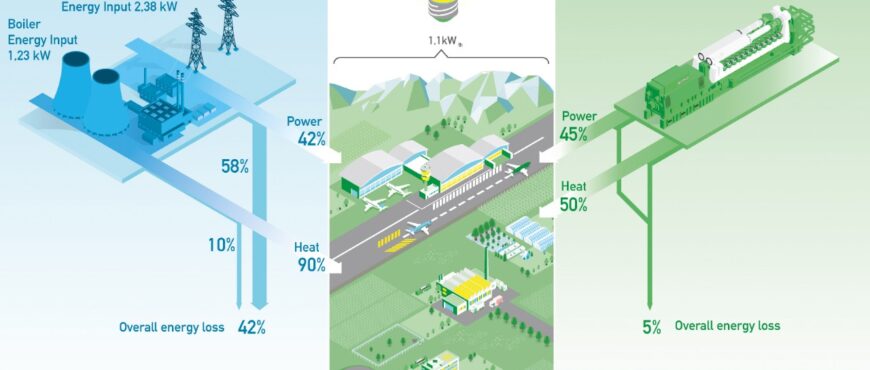Landfill Gas
Landfill Gas
Created during the decomposition of organic substances, landfill gas consists of methane, carbon dioxide, and nitrogen.
How does it work?
Municipal waste contains about 150 to 250 kg of organic carbon per ton. These substances are biologically degradable and are converted by microorganisms into landfill gas. Stable, anaerobic methane fermentation begins one to two years after the waste is deposited in the landfill.
Following a simple rule of thumb, 1 million tons of deposited municipal solid waste will produce landfill gas over a twenty-year period—an amount sufficient to fuel a gas engine capacity of 1 MW.
Perforated tubes are drilled into the landfill body and interconnected by a pipe work system.
Using a blower, the gas is sucked from the landfill, compressed, dried and fed into the gas engine.
In most cases, the generated electrical power is fed into the public grid.
Since there is no buyer for the heat output in most cases, the thermal energy could be converted into further electrical power


